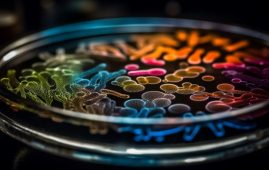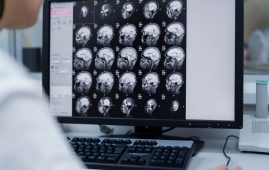

Understanding how the body adjusts to the intense energy demands of nursing has long been a subject of scientific curiosity. Now, a landmark lactation metabolism study published in Nature Metabolism uncovers the brain-based mechanism that helps mothers balance hormonal changes and metabolic needs during breastfeeding.
Researchers from Baylor College of Medicine and Pennington Biomedical Research Center have identified how the brain orchestrates the interplay between prolactin, estrogen, and energy conservation to sustain milk production.
How the Brain Adapts to the Metabolic Demands of Lactation
“Nursing mothers need to eat more and burn less fat to meet the demands of milk production,” said Dr. Chunmei Wang, co-corresponding author and assistant professor of pediatrics at Baylor. “We used animal models to investigate how the brain and hormones adapt to this challenge.”
The lactation metabolism study reveals a compelling hormonal shift: estrogen levels decrease, while prolactin levels increase. Estrogen typically curbs appetite and promotes fat burning, whereas prolactin does the opposite. The reversal of these functions enables the body to prioritize milk synthesis.
Estrogen Receptor Neurons Play a Central Role in Lactation Metabolism
Key to this adaptation are estrogen receptor α (ERα) neurons in the hypothalamus. During lactation, these neurons become less active, contributing to increased hunger and energy conservation.
“We showed that removing ERα from this specific brain region causes prolactin to surge and metabolic behavior to mimic lactation—more eating and less fat burning—even in non-lactating mice,” explained Dr. Meng Yu, co-first author and postdoctoral associate in the Wang Lab.
“Reactivating these ERα neurons in lactating mice reversed those effects, confirming their critical role in metabolic control,” added Dr. Yanlin He, co-corresponding author at Pennington Biomedical.
A New Mechanism in Prolactin Regulation During Lactation
Traditionally, prolactin was thought to be regulated only at the pituitary level. This study adds a new layer: estrogen’s activation of ERα neurons in the hypothalamus plays a suppressive role in prolactin regulation. This brain-hormone interaction creates a precise balance to support maternal metabolism.
“This is a novel mechanism,” Dr. Wang noted. “Understanding how the hypothalamus regulates prolactin through estrogen opens doors to clinical applications.”
Broader Implications for Health Beyond Lactation
The implications of these findings extend well beyond lactation. They offer valuable insights for conditions such as hyperprolactinemia, obesity, menopause, and other metabolic disorders related to hormonal imbalance.
“This is not just about lactation metabolism,” said Dr. He. “This study opens up new avenues to understand how the brain integrates hormonal cues to regulate energy balance across many stages of life.”
For more information: Yu, M., et al. (2025). Suppression of hypothalamic oestrogenic signal sustains hyperprolactinemia and metabolic adaptation in lactating mice. Nature Metabolism. doi.org/10.1038/s42255-025-01268-z.
more recommended stories
 Brain’s Biological Age Emerges as Key Health Risk Indicator
Brain’s Biological Age Emerges as Key Health Risk IndicatorClinical Significance of Brain Age in.
 Children’s Health in the United States is Declining!
Children’s Health in the United States is Declining!Summary: A comprehensive analysis of U.S..
 Autoimmune Disorders: ADA2 as a Therapeutic Target
Autoimmune Disorders: ADA2 as a Therapeutic TargetAdenosine deaminase 2 (ADA2) has emerged.
 Is Prediabetes Reversible through Exercise?
Is Prediabetes Reversible through Exercise?150 Minutes of Weekly Exercise May.
 New Blood Cancer Model Unveils Drug Resistance
New Blood Cancer Model Unveils Drug ResistanceNew Lab Model Reveals Gene Mutation.
 Healthy Habits Slash Diverticulitis Risk in Half: Clinical Insights
Healthy Habits Slash Diverticulitis Risk in Half: Clinical InsightsHealthy Habits Slash Diverticulitis Risk in.
 Caffeine and SIDS: A New Prevention Theory
Caffeine and SIDS: A New Prevention TheoryFor the first time in decades,.
 Microbial Metabolites Reveal Health Insights
Microbial Metabolites Reveal Health InsightsThe human body is not just.
 Reelin and Cocaine Addiction: A Breakthrough Study
Reelin and Cocaine Addiction: A Breakthrough StudyA groundbreaking study from the University.
 Preeclampsia and Stroke Risk: Long-Term Effects
Preeclampsia and Stroke Risk: Long-Term EffectsPreeclampsia (PE) – a hypertensive disorder.

Leave a Comment